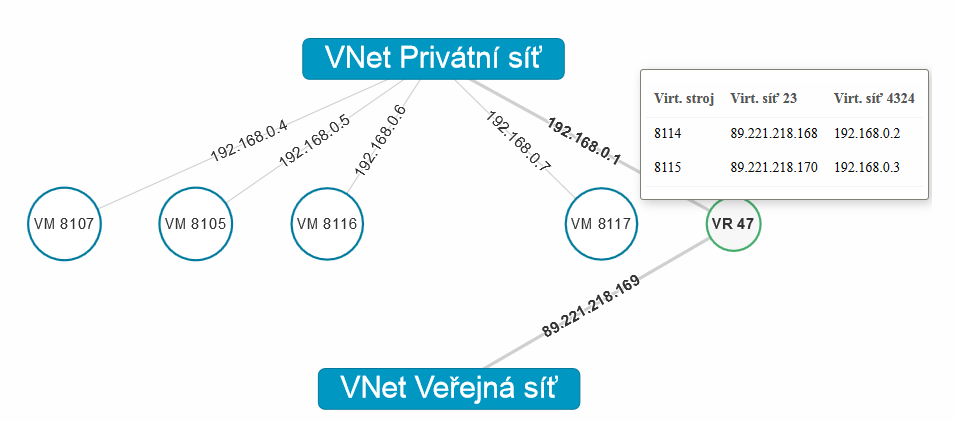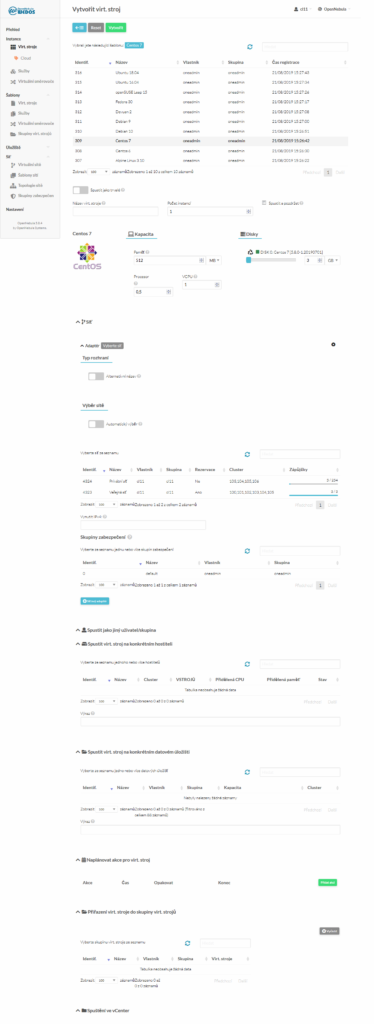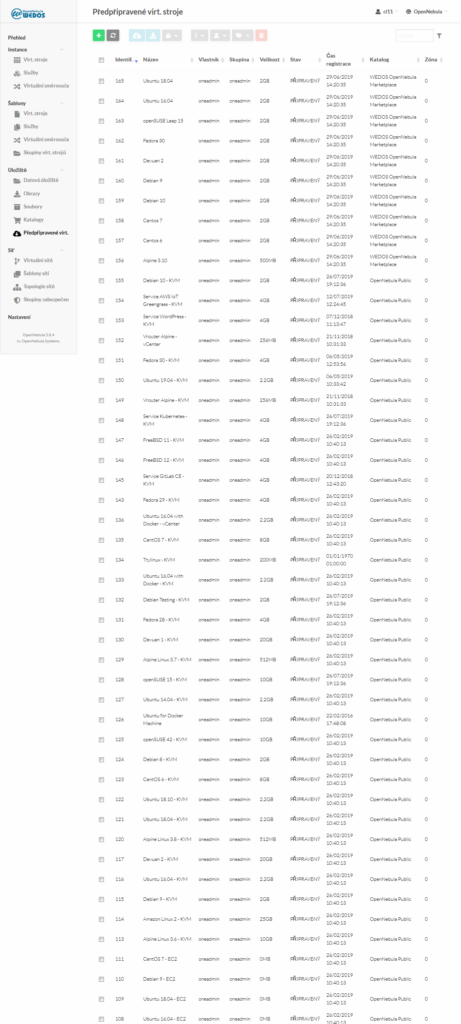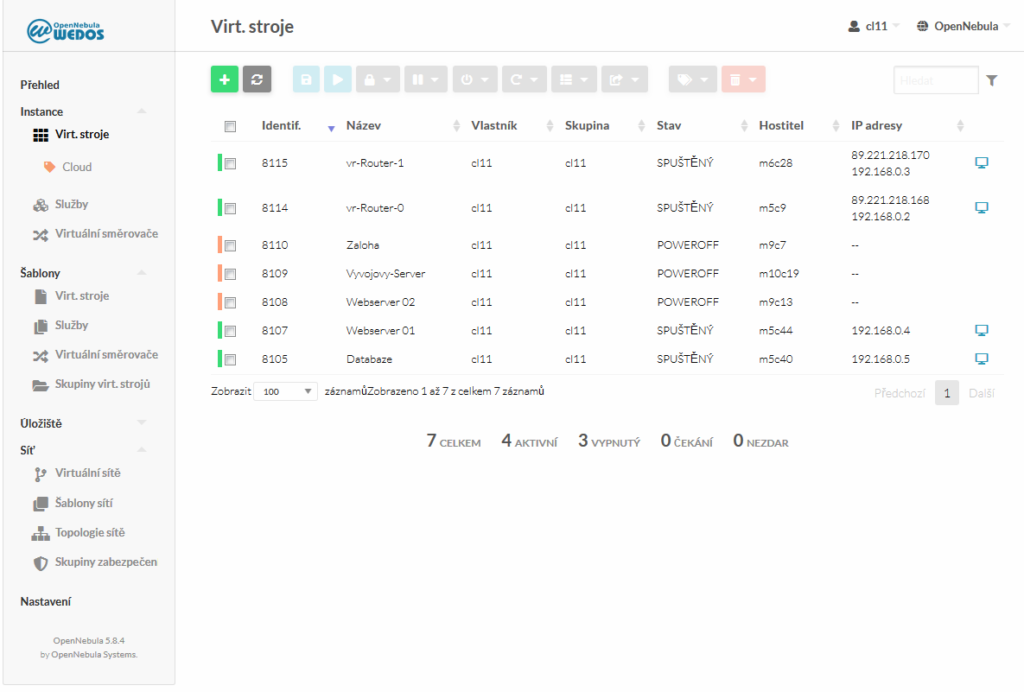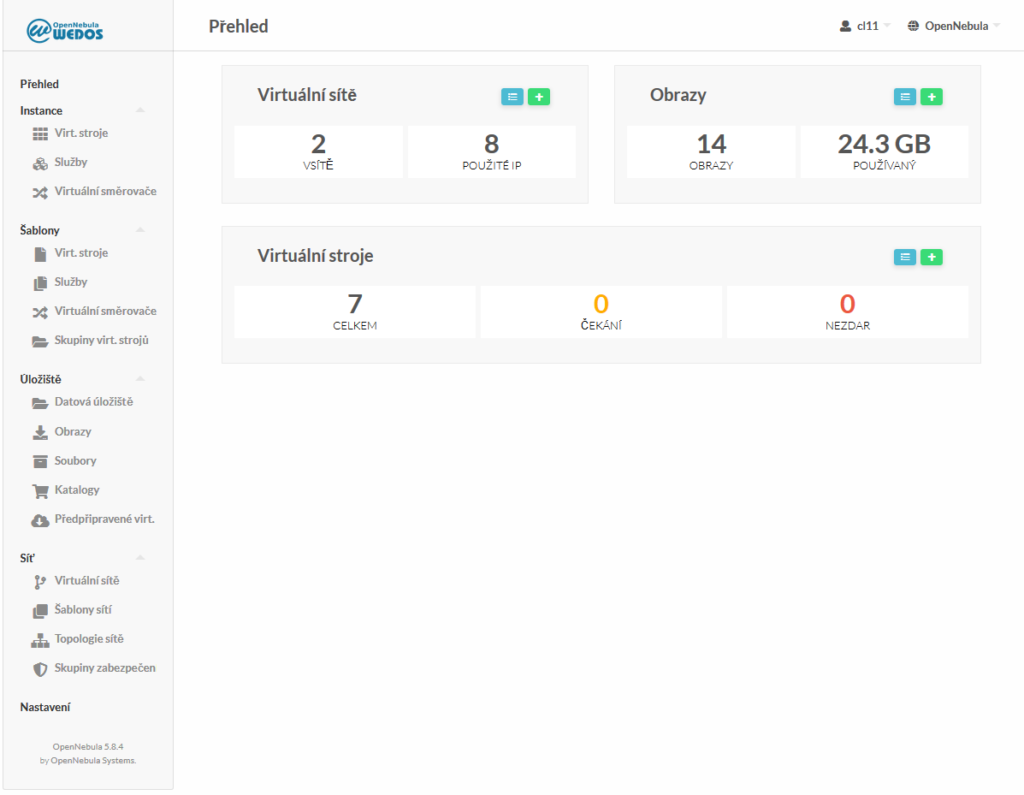WEDOS Cloud is one of the biggest challenges we have ever taken on. Building a true cloud that can compete with large multinational competitors in the future was not easy. It has taken a long time and we still have a lot of work to do. However, we have reached the stage where the service is ready for a closed beta test.
The current size of the WEDOS Cloud testbed is 270 physical servers, but 720 will be ready for the launch of the service. There will be much, much more in the future. We have one datacenter that can accommodate several thousand servers. We are finishing the second one, which can accommodate over 10,000 servers, and we are preparing the construction of the third one. So there could be thousands and thousands and thousands of physical servers… You’ll be able to migrate your virtual machines between them as you need them. This has a big impact on speed (within a single server or server enclosure), risk distribution (different racks) or physical security (different datacentres).
So far all physical servers are in one DC (DC1), but from autumn we will start testing our second datacenter (DC2). So from next year it will be possible to create virtual machines in the cloud in DC2, which is in the process of TIER IV certification, and if everything goes according to plan, from 2021 in DC3.
All datacenters are (and will be for DC3) interconnected with our multiple 100 Gbps connectivity. That’s why we also plan not to charge for data transferred within the internal network or even out, which is what big competitors commonly do. Now we are just considering whether the internal connectivity (in dedicated vlans) between the virtual machines will be 100 Mbps in the base and 1 Gbps for an extra charge or 1 Gbps in the price.
External connectivity to the Internet will be 1 Gbps for each WEDOS Cloud customer, with future upgrades or dedicated connectivity of up to tens of Gbps available for an additional fee.
Our optical routes are secure and backed up. They lead physically to different places, they do not converge and do not cross or meet anywhere. They arrive in both datacentres from different sides and end up in completely different places (opposite parts of the building) in each datacentre.
What WEDOS Cloud can do
- High availability, load balancer, NAT, proxy, virtual routers.
- Create virtual machines on different physical servers manually or automatically based on your scripts.
- Migrate or clone these virtual machines across the cloud.
- Create entire groups of virtual machines with their own rules.
- Manage public and private networks, rearrange virtual machines in them.
- Create virtual machines with pre-made Image (base OS or empty).
- Create custom virtual machine images.
- Create virtual machines according to predefined rules (scripts).
- Starting and shutting down virtual servers based on load or scheduler.
What WEDOS Cloud can’t do yet, or can do but won’t be available during beta testing
- API access and control
- creating your own private cloud on dedicated HW
- creating a hybrid cloud
- creating virtual machines in different datacentres
- connection to MS Azure and Amazon WS (AWS)
- multiple dedicated private networks
- different types of disk storage (slow, fast, cheap, expensive)
For more information on what we are planning with WEDOS Cloud, see our earlier article.
Phase 1 – finding bugs and gathering information from real cloud experts
This phase starts today and will last until the 15th. September 2019. We are looking for a total of 10 people who have real cloud experience. You will try out WEDOS Cloud, keep us informed about the shortcomings and what you would like to see.
At this stage, we are just gathering information. Any errors will be corrected after the end of phase 1.
Throughout the testing period, you can use the allocated resources in an appropriate way so that you can test our WEDOS Cloud and ideally compare it with the competition. Since there’s no problem connecting it to existing clouds like Amazon’s in the future, you can save money 🙂
Allocations:
- Physical CPU: 6
- RAM: 10 GB
- SSD: 40 GB
- Internet connectivity 500 Mbps
- 3 external IP
The above allocations are universal. If you are going to test and try something specific, it is not a problem to increase them.
We will not provide customer support for this service during this phase. Data is not backed up. Respectively, they are backed up for our use in testing, but we will not provide them.
Phase 2 – Extended Closed Beta Test
If all goes according to plan, this phase will begin on the 24th. September and will run until 30. September 2019. There will be an additional 20 test accounts available for both expert and advanced users. We will respond to all suggestions on an ongoing basis and correct any errors as we go along.
The purpose is to find out what the advanced user needs, how the service suits the user and, if necessary, to compare it with competing services.
- Physical CPU: to be specified
- RAM: to be specified
- SSD: to be specified
Phase 2.1 – another extended closed beta test
In case we encounter more complications, another closed beta test will be conducted. We need to debug the service and, most importantly, catch all the bugs.
Phase 3 – Open Beta Test
If all goes according to plan, an open beta test will be launched in October. It will be used to test a full-fledged service, including ordering and automatic set-up.
User accounts and data can be left on the servers after the end of testing. In other words, the open beta test will go live.
Conclusion
If you are interested in testing please contact us via the contact form. Put – Interested in testing WEDOS Cloud in the subject line, then write something about yourself – what experience you have and which competing services you use.
If you are selected, we will send you login details within 3 working days.
If you want to test the service, you should know English (the environment is in Czech, but the instructions are only in English) and you should understand terms like:
- routing
- NAT, proxy servers, transparent proxies
- SSH keys, SSH server accesses
- configuration of webserver, database (if needed)
You also need to know how to configure it…
In the future, some things will be automatic or automated by each WEDOS Cloud user. We are now about the initial tests of the foundation of our infrastructure.

